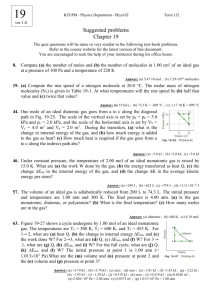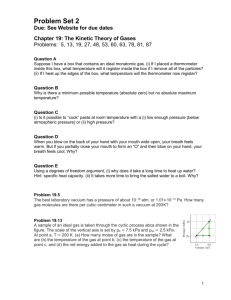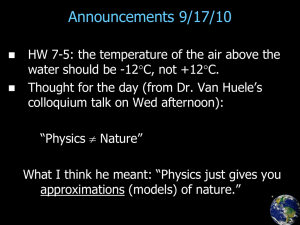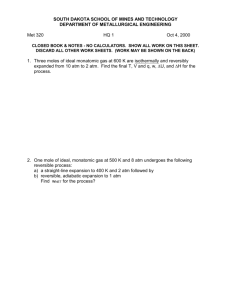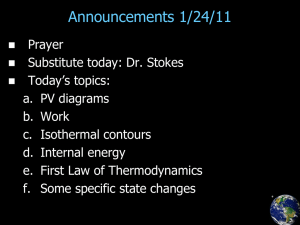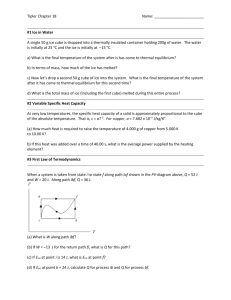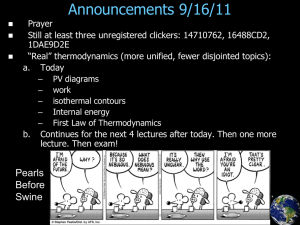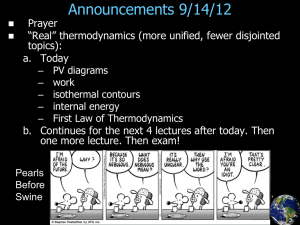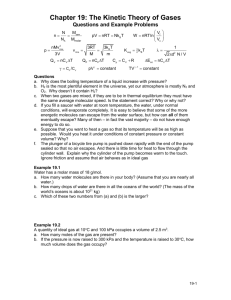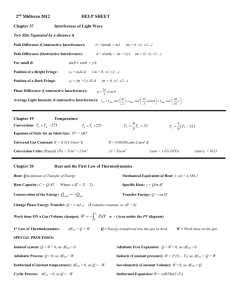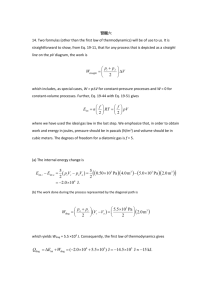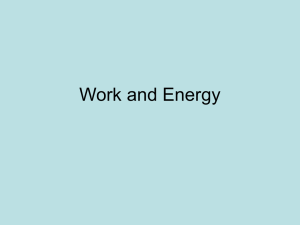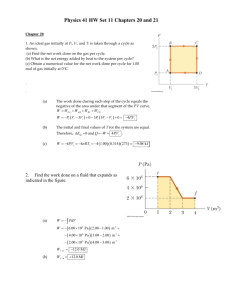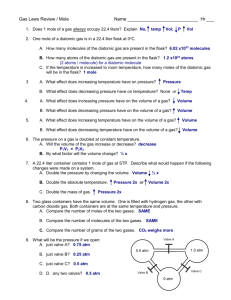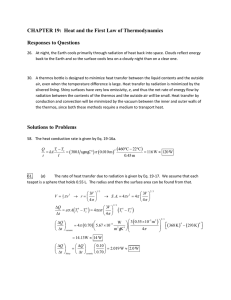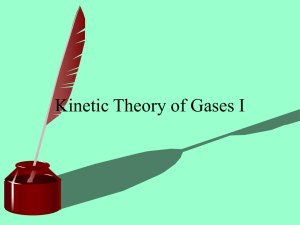Suggested
advertisement
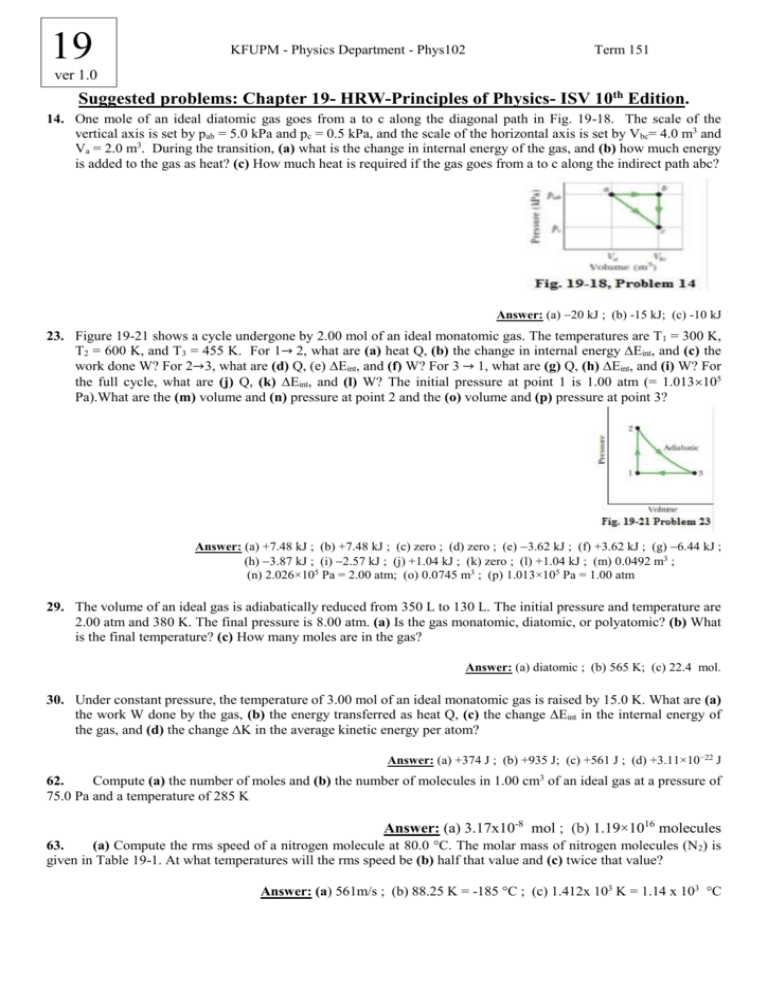
19 KFUPM - Physics Department - Phys102 Term 151 ver 1.0 Suggested problems: Chapter 19- HRW-Principles of Physics- ISV 10th Edition. 14. One mole of an ideal diatomic gas goes from a to c along the diagonal path in Fig. 19-18. The scale of the vertical axis is set by pab = 5.0 kPa and pc = 0.5 kPa, and the scale of the horizontal axis is set by Vbc= 4.0 m3 and Va = 2.0 m3. During the transition, (a) what is the change in internal energy of the gas, and (b) how much energy is added to the gas as heat? (c) How much heat is required if the gas goes from a to c along the indirect path abc? Answer: (a) 20 kJ ; (b) -15 kJ; (c) -10 kJ 23. Figure 19-21 shows a cycle undergone by 2.00 mol of an ideal monatomic gas. The temperatures are T1 = 300 K, T2 = 600 K, and T3 = 455 K. For 1→ 2, what are (a) heat Q, (b) the change in internal energy ∆Eint, and (c) the work done W? For 2→3, what are (d) Q, (e) ∆Eint, and (f) W? For 3 → 1, what are (g) Q, (h) ∆Eint, and (i) W? For the full cycle, what are (j) Q, (k) ∆Eint, and (l) W? The initial pressure at point 1 is 1.00 atm (= 1.013105 Pa).What are the (m) volume and (n) pressure at point 2 and the (o) volume and (p) pressure at point 3? Answer: (a) +7.48 kJ ; (b) +7.48 kJ ; (c) zero ; (d) zero ; (e) 3.62 kJ ; (f) +3.62 kJ ; (g) 6.44 kJ ; (h) 3.87 kJ ; (i) 2.57 kJ ; (j) +1.04 kJ ; (k) zero ; (l) +1.04 kJ ; (m) 0.0492 m3 ; (n) 2.026×105 Pa = 2.00 atm; (o) 0.0745 m3 ; (p) 1.013×105 Pa = 1.00 atm 29. The volume of an ideal gas is adiabatically reduced from 350 L to 130 L. The initial pressure and temperature are 2.00 atm and 380 K. The final pressure is 8.00 atm. (a) Is the gas monatomic, diatomic, or polyatomic? (b) What is the final temperature? (c) How many moles are in the gas? Answer: (a) diatomic ; (b) 565 K; (c) 22.4 mol. 30. Under constant pressure, the temperature of 3.00 mol of an ideal monatomic gas is raised by 15.0 K. What are (a) the work W done by the gas, (b) the energy transferred as heat Q, (c) the change ∆Eint in the internal energy of the gas, and (d) the change ∆K in the average kinetic energy per atom? Answer: (a) +374 J ; (b) +935 J; (c) +561 J ; (d) +3.11×10−22 J 62. Compute (a) the number of moles and (b) the number of molecules in 1.00 cm3 of an ideal gas at a pressure of 75.0 Pa and a temperature of 285 K Answer: (a) 3.17x10-8 mol ; (b) 1.19×1016 molecules 63. (a) Compute the rms speed of a nitrogen molecule at 80.0 °C. The molar mass of nitrogen molecules (N2) is given in Table 19-1. At what temperatures will the rms speed be (b) half that value and (c) twice that value? Answer: (a) 561m/s ; (b) 88.25 K = -185 °C ; (c) 1.412x 103 K = 1.14 x 103 °C
